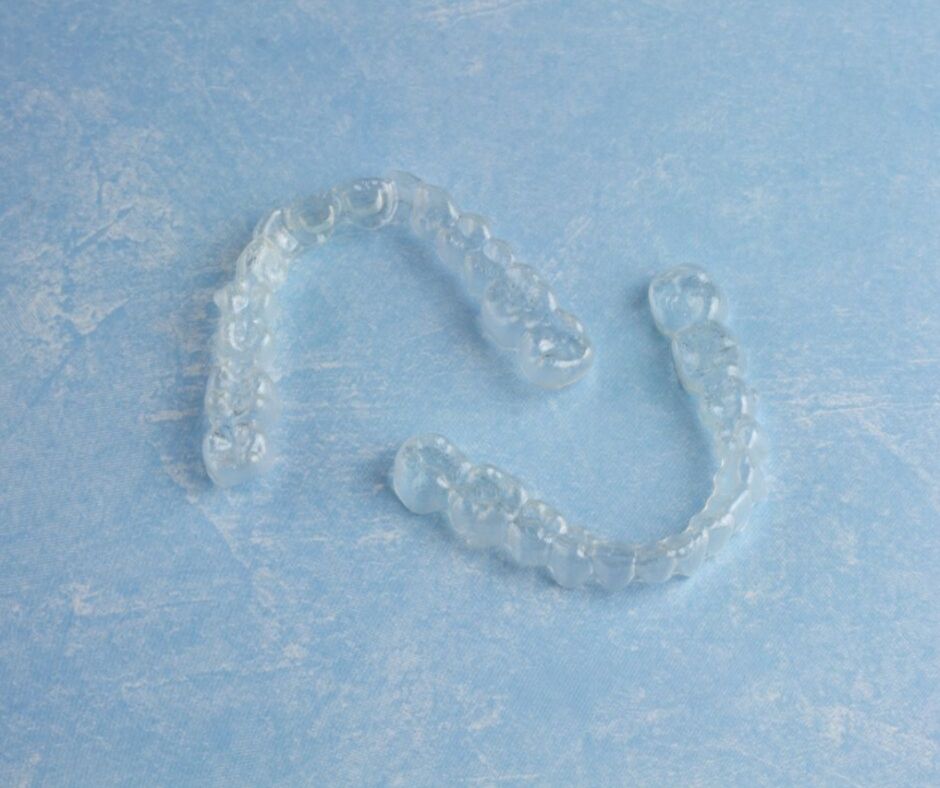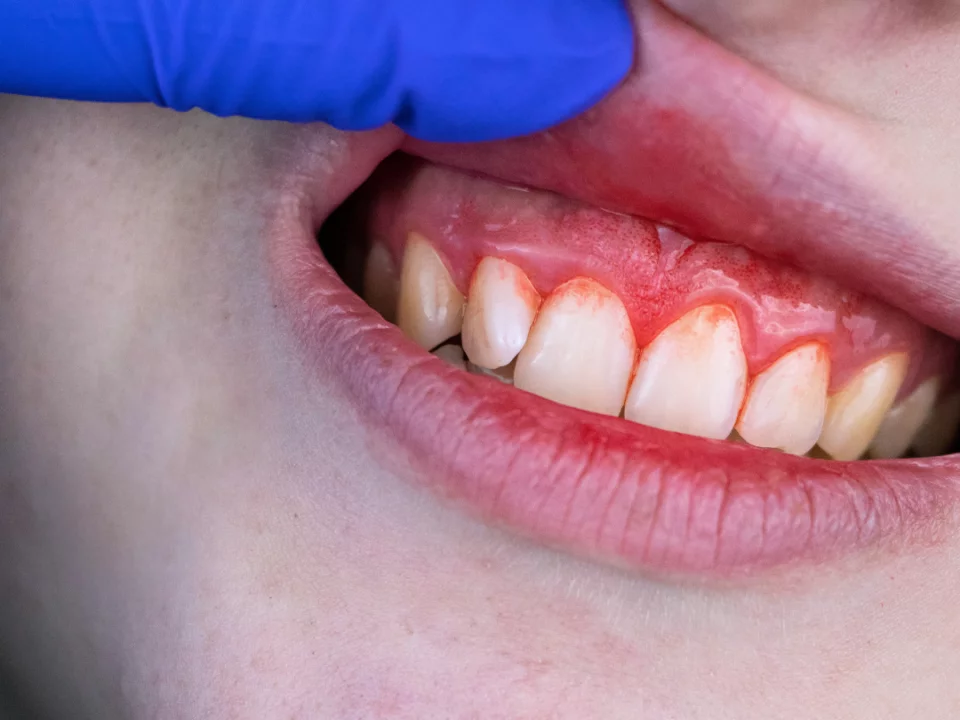
Can You Eat with Invisalign: Our Top Tips
April 22, 2024
Do At-Home Teeth Whitening Kits Work?
May 12, 2024Key Takeaways:
Common Occurrence:
Gum Line cavities are prevalent among adults due to factors like poor oral hygiene, gum recession, acidic foods, and dry mouth conditions.
Signs and Symptoms:
Identifying gum line cavities early is crucial. Symptoms include sensitivity or pain along the gumline, visible decay or discoloration, and gum recession exposing the roots.
Preventive Measures:
Effective prevention involves maintaining good oral hygiene through regular brushing and flossing, and limiting sugary and acidic foods. Regular dental visits are essential for professional cleaning, early detection, and personalized advice on maintaining oral health.
Have you been experiencing pain or sensitivity along your gumline? This could be a sign of a gumline cavity – a dental issue that requires immediate action to avoid further damage to oral health.
Being diagnosed with a cavity can be stressful, but you’re not alone. Cavities are extremely common. The National Institutes of Health reports that 92 percent of adults (ages 20 to 65) have had cavities in their permanent teeth. Cavities may form in the pits and grooves of the molars, the spaces between teeth, or even along the gumline. If you were diagnosed with the latter type, known as a gumline cavity, you may be curious to learn more.
Here, we explore what gumline cavities are and their causes, symptoms, and best prevention techniques to maintain optimal oral health.
What is Gumline Cavity?
A gumline cavity also known as a root surface cavity, refers to decay that develops on the root surface of a tooth near the gumline. As opposed to traditional cavities that develop on the enamel surface of teeth, gumline cavities occur more commonly on roots due to exposure.
Causes of Gumline Cavities
Dental cavities form when plaque, a sticky bacterial film, builds up inside the mouth. The bacteria produce acids, and these acids dissolve the tooth enamel. Over time, a pit develops in the tooth, and a cavity is formed.
Plaque tends to accumulate more easily in certain areas. The pits and fissures of the back teeth are a hot spot for plaque, and so are the spaces between the teeth. Plaque also builds up easily along the gumline, and if it’s not removed, you could end up with a gumline cavity.
Gumline cavities can also be associated with exposed tooth roots. Roots are usually protected by gum tissue, but if the gum tissue recedes, the roots will be vulnerable. That’s because roots are covered in a material called cementum, which is much weaker than tooth enamel. Cavities that form in the roots can get worse quickly.
Multiple factors play a part in the formation of gumline cavities:
Poor Oral Hygiene
Improper brushing and flossing techniques may leave food particles and plaque along the gumline, leading to decay over time. It is crucial to look for help on how to treat tooth decay at the gum line.
Gum Recession
When gums recede due to age, aggressive brushing, or gum disease, their roots become exposed and more susceptible to decay.
Acidic Foods and Beverages
Consumption of acidic food and beverages can damage tooth enamel, leaving root surfaces vulnerable to decay.
Dry Mouth
Saliva plays an essential role in neutralizing acids and flushing away food debris, so having a dry mouth can increase the risk of gumline cavities. Talk to your dentist if you have a dry mouth at night.
Identification of Gumline Cavities
Acknowledging the signs and symptoms of gumline cavities is vital to obtain timely treatment. Common indicators may include:
- Sensitivity: You may experience gumline sensitivity or pain when eating and drinking hot, cold, or sweet food.
- Visible Decay: As gum disease progresses, visible signs of decay or discoloration along the gumline may become evident.
- Gum Recession: Receding gums expose the root surface, increasing susceptibility to decay and creating discomfort for you and others nearby.
Treatment of Gumline Cavities
Filling the tooth is the standard treatment for cavities. After numbing the area, the dentist uses a drill or laser to remove the decayed material. Then, the cavity is filled with a material like dental amalgam or composite resin.
Cavities along the gumline are treated in the same way but with some small differences. If the cavity extends beneath the gumline, it can be hard for the dentist to access it with their drill or laser. In these situations, Dear Doctor explains that minor gum surgery may be required to access the cavity.
How to Prevent Gumline Cavities
Preventing gumline cavities requires practicing good oral hygiene and making healthy lifestyle decisions, among other steps. Here are a few tips for keeping your gums and teeth in top condition:
Brush and Floss Regularly
Be sure to brush at least twice a day and floss at least once daily to remove plaque and food debris from along your gumline.
Remember to brush along your gumline with the proper brushing technique. To do this, simply place your toothbrush at a 45-degree angle to your gumline and use a back-and-forth motion to brush the gumline along each tooth. Once your gumline is clean, move on to your other tooth surfaces.
Flossing once a day is also important for cavity prevention. Flossing with proper technique helps you remove plaque from areas that are hard to reach with your toothbrush, including beneath your gumline. To floss beneath your gumline, curve the floss around the base of each of your teeth. Be gentle to avoid cutting or bruising your gum tissue.
Use Fluoride Toothpaste
Fluoride helps strengthen tooth enamel and make it more resistant to decay, making your teeth safer from cavities. Choose a toothpaste that contains fluoride for maximum protection.
Limit Sugary and Acidic Foods
Limiting your intake of sugary and acidic food products can prevent gumline cavities. These may contribute to tooth decay and erosion.
Visit Your Dentist Often
Regular visits to your dentist will enable them to detect and treat cavities early. It also offers personalized advice about maintaining good oral health.
At checkups, your dentist or dental hygienist can thoroughly clean your teeth and remove plaque and tartar from along the gumline. The dentist can then thoroughly examine your mouth and look for conditions, like gum recession, that could put you at risk of gumline cavities. Watch out for the signs you need to see your dentist.
Consider Fluoride Treatments
If your risk for cavities is high, fluoride treatments could be recommended by your dentist to strengthen and protect against decay.
Address Gum Recession
If your gums have begun receding, consult a dentist immediately to find its source and discover potential treatments to stop further gum recession to fix receding gums.
Schedule an Appointment at Matthews Family Dentistry
Gumline cavities can cause immense discomfort and be detrimental to oral health if left untreated. By understanding their causes, symptoms, and prevention techniques you can take proactive measures against tooth decay. Practice good oral hygiene habits and regularly visit your dentist to prevent gumline cavity.
Contact Matthews Family Dentistry to schedule your dental check-up and learn more about our top oral hygiene health tips.





